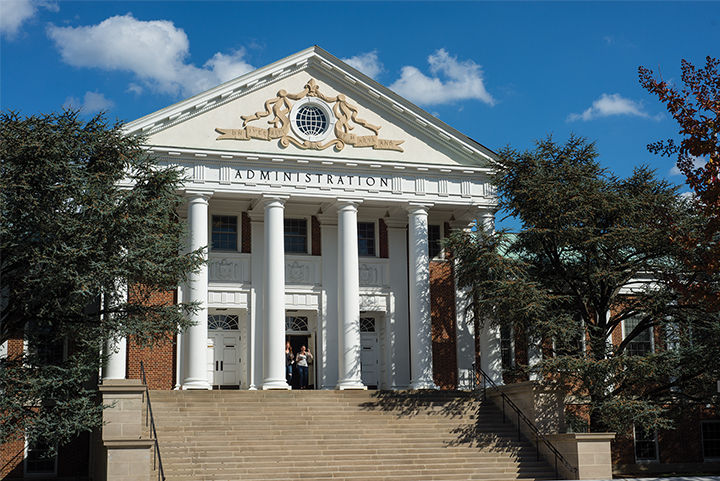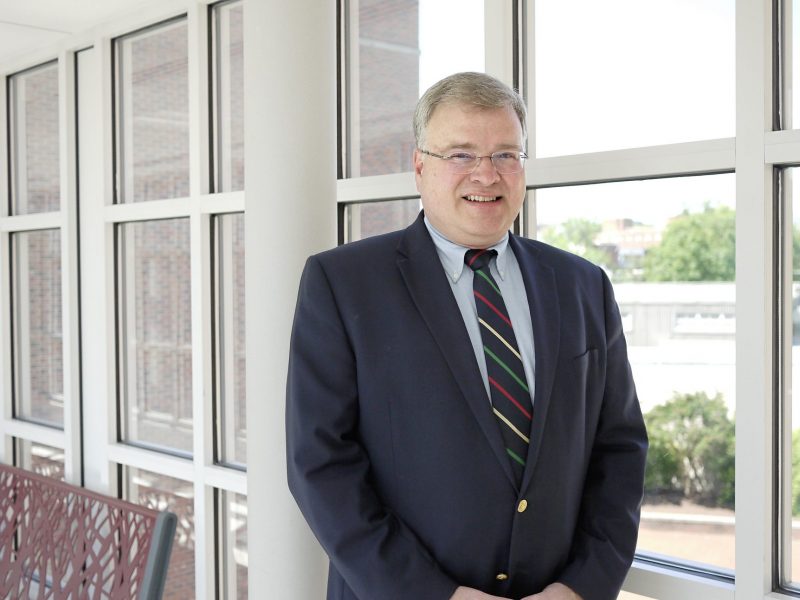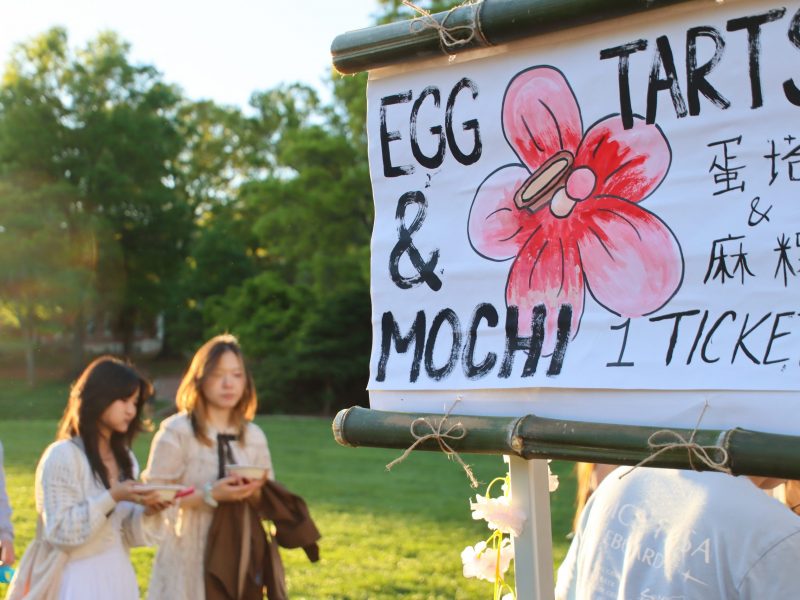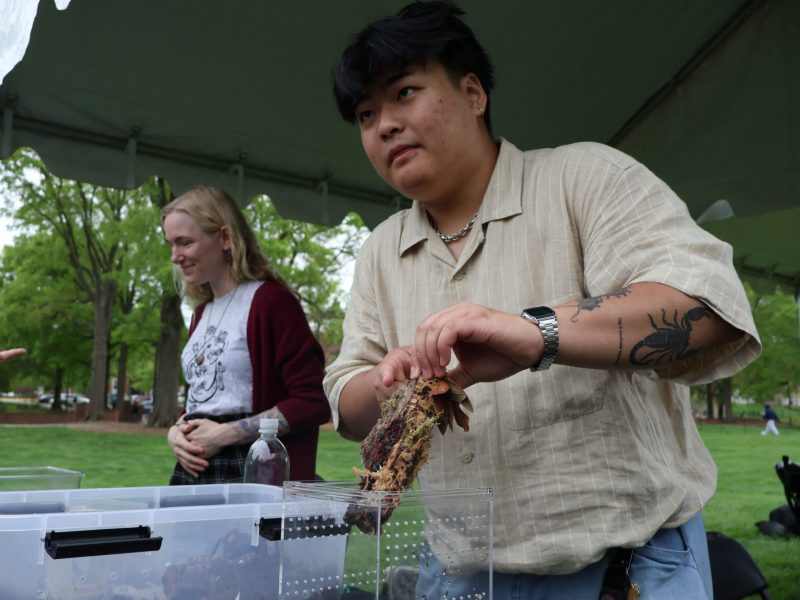A former University of Maryland student has filed a federal lawsuit seeking $5 million, alleging he was wrongfully expelled after the university determined he sexually assaulted a woman in on-campus housing, according to documents obtained by The Diamondback.
The complaint, filed Sept. 30, against university President Wallace Loh and Title IX Coordinator Catherine Carroll, among other administrators, claims this university violated the student’s due process rights during the investigation into a reported sexual misconduct that occurred at about 5 a.m. Dec. 14, 2014.
The students in the complaint are not named. Instead, the lawsuit refers to the expelled student as John Doe and the woman with whom he had a sexual encounter as Jane Roe.
In the federal lawsuit, Doe alleges the university violated several of his due process rights, such as not being given “adequate notice” of the hearing or the specific charges against him. The complaint also states he was not given all of the information the university used when making its decision.
“The University is aware of the lawsuit filed against several staff members,” university spokesman Brian Ullmann wrote in a statement. “We are confident that our policies and procedures support our commitment to maintaining a campus wide environment free of sexual misconduct and we intend to mount a vigorous defense. Persons found responsible for any form of sexual assault will be held accountable, regardless of threatened legal action. Based on longstanding policy, we will have no further comment on any ongoing litigation.”
Loh reiterated this sentiment in a phone call with The Diamondback Friday morning. He said “the University of Maryland will mount a vigorous defense in this case.”
The woman called the University of Maryland Police Department after the incident in a Frederick Hall dorm. When the officer met the woman about an hour later, the woman explained what happened earlier and wrote a witness statement. Officers interviewed her again about the incident at 8:15 a.m. and included her verbal statements in the police reports. Afterwards, an officer drove her to Prince George’s Hospital for a Sexual Assault Forensic Exam, according to the report.
Later that afternoon, an officer collected DNA samples from Doe. Less than two hours later, the officer contacted the assistant state’s attorney for Prince George’s County and the head of the ASA Sex Unit, and both agreed no crime had been committed. The police report provided with the lawsuit stated the case will remain open pending further investigation.
Meanwhile, this university’s Office of Civil Rights and Sexual Misconduct conducted an independent investigation and found Doe had violated the university’s sexual misconduct policy.
There are different standards of proof in a criminal report and an university administrative complaint. To convict a suspect with sexual assault, the criminal system would require it occurred “beyond a reasonable doubt.” The university sanctions a student if there is a preponderance of evidence that he or she violated the sexual misconduct policy, in accordance with the Education Department.
The lawsuit claims Doe was three credits shy of graduation at the time of his expulsion, had he been given the credits from his 2015 spring semester. With this mark on his student record, Doe is unable to continue his education, the lawsuit states.
Doe is seeking a removal of the expulsion from his file, as well as re-enrollment at this university and compensation for fees acquired during this process. Among other complaints, Doe said he he was given 24 hours notice of a meeting with university officials and therefore, ended up missing it, according to an email to Andrea Goodwin, the director of student conduct.
The university’s Standing Review Committee determined whether “it is more likely than not” that a sexual misconduct policy violation occurred. Goodwin denied Doe’s request to postpone this committee meeting for his case until he was able to meet with a representative from the Student Legal Aid Office, according to the email.
Amid increased scrutiny on campus sexual assault nationwide, this university has ramped up its efforts to combat the issue.
The Education Department’s Office of Civil Rights issued “Dear Colleague” letters in 2011 to institutions it believed needed to better investigate sexual misconduct cases. This university did not receive a letter. However, it established the Office of Civil Rights and Sexual Misconduct and hired its first Title IX Officer in 2014.
Title IX requires colleges to take immediate action if it is determined a violation of sexual misconduct occurred, and prevent the misconduct from reoccurring. The number of expulsions at this university has increased since the office was founded, with three students expelled between July 1, 2014 and June 30, 2015, and four students expelled the next year.
However, many students believe the administration has not done enough and delivered a petition to Loh’s office last month demanding in-person training for incoming freshman that addresses sexual violence, among other demands.
Earlier this semester, the Student Government Association withdrew its proposal for a $34 annual fee to support the Title IX office, after Loh told them he would table it. The administration later announced it would fund six new positions across two offices dealing with these issues.
But last month, Loh told the Residence Hall Association Senate that this university is “being sued left and right.”
“They’re holding me personally accountable for expelling a student,” he said during a RHA Senate meeting. “In other words, my commitment, I want to tell you, goes beyond providing resources for our office. It is putting myself on the line in this way.”
This university joins a growing list of colleges facing lawsuits over their handling of sexual misconduct complaints.
***
The details of the incident vary between the police report and documents noted in the lawsuit, a difference the university’s Special Investigator Josh Bronson attributed to his knowledge of conducting a trauma-informed investigation, according to the complaint.
Bronson wrote that the University Police interview did not appear to have used these techniques.
While training about 20 faculty and staff interested in being on a standing review committee in September 2015, Bronson said a person’s memory is fragmented after trauma. This is why he or she may remember different details during subsequent questions and is often misinterpreted as lying, Bronson told the group.
Doe went to R.J. Bentley’s that Saturday night, where he met Roe, and other friends, according to the police report. At about 2 a.m., Doe and Roe, along with their friends, walked to another friend’s apartment-style dorm in Frederick Hall, the report states.
The group hung out in the dorm and played video games. Roe was tired and went to sleep in the bed of a person identified as K.P., and K.P. later joined her, according to the complaint. At some point, K.P. woke up and left the room.
There are conflicting accounts in the police report and materials referred to in the lawsuit regarding how Doe ended up in bed with Roe. Friends interviewed by the police provided different details on what happened.
One said Doe brought it up as “a dare for himself” to see how long it would take Roe to notice he wasn’t the man she fell asleep with. Another said someone may have “challenged” him to go into the room. The lawsuit states Doe just wanted to sleep and there was no dare.
The lawsuit references Bronson’s investigative report, in which Bronson notes he reached out to all witnesses in the police report, but did not end up speaking with any of them.
The lawsuit quotes Bronson’s notes, which state Roe woke up to Doe touching her in bed.
Doe recounted when Roe woke up, she turned her head toward him and the two kissed mutually, according to the police report provided in the lawsuit.
The two began engaging in other sexual acts before the woman realized she was no longer in bed with K.P., according to the police report. Doe said in the report that he thought she knew it was him because the two had spoken.
She then yelled for him to stop and Doe complied, got dressed and left the room, according to the police report.
***
The university found he committed Sexual Assault I — defined as any act of sexual intercourse without consent.
Consent is currently defined as a “knowing, voluntary, and affirmatively communicated willingness to participate in a particular sexual activity or behavior,” according to university policy.
State law says a person can not force another person to engage in sexual behavior without consent or if the person is unconscious.
However, the assistant state’s attorney for Prince George’s County and the head of the ASA Sex Unit agreed no crime had been committed because they believed the sexual acts were consensual and Doe immediately stopped when she “revoked consent,” according to the police report.
But the standing review committee did not agree with the assistant state’s attorney finding acknowledged in the police report.
The review committee determined that Doe – “while masquerading as [K.P]” – did not attempt to let Roe know who he was. Therefore, Roe had “no reason to believe the person who began touching her was not the same person she went to bed with,” according to materials noted in the lawsuit.
The lawsuit also alleges that when Bronson, the special investigator, interviewed Doe, it was more like an “inquisition” and the report of this interview was distorted, editorialized and left out “significant facts.”
This was consequential because Bronson’s report was “the only evidence” the review committee considered when determining if a sexual misconduct violation occurred, according to the lawsuit.
And when Doe would inquire about the case, the information he did receive from the university was “vague and conflicting,” and included some old policy and procedures, according to the lawsuit.
The university’s sexual misconduct policies and procedures have undergone significant changes in recent years. During Doe’s time on campus, the statutes have gone through multiple iterations, which his lawyer said was problematic.
The lawsuit alleges that Goodwin sent Doe an outdated policy which had differing definitions of consent and incapacity.
“I believe the university could do a better job adhering to its own procedures,” Robert Clarke, a lawyer representing Doe said. “There’s been lots of different procedures and they have changed multiple times.”



